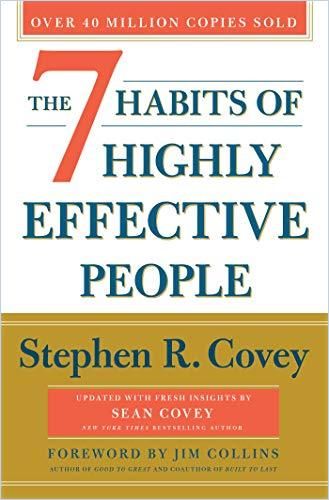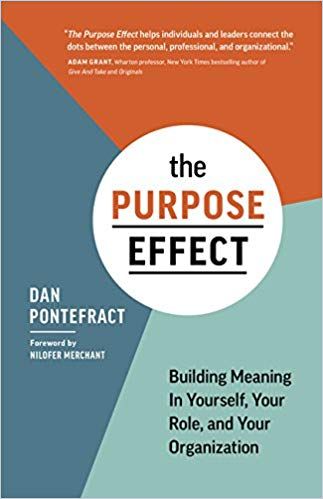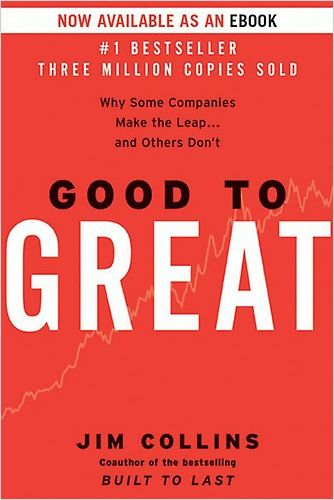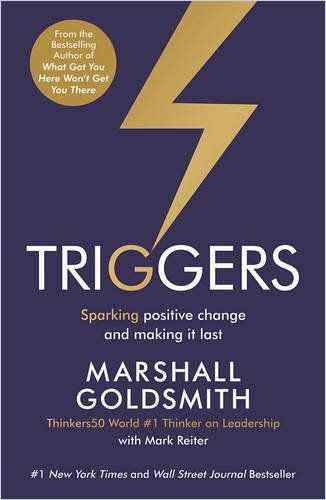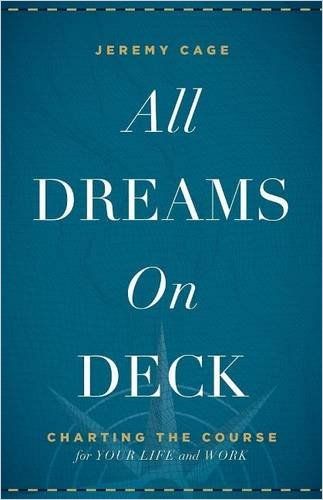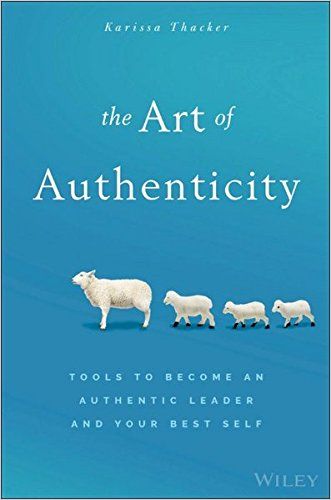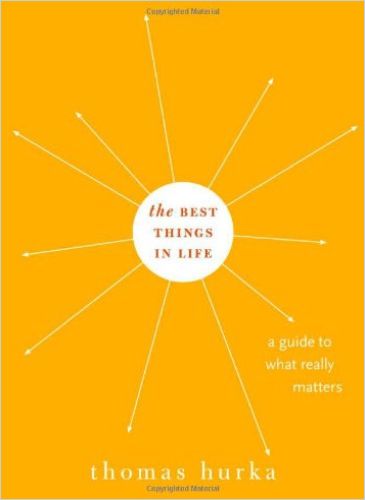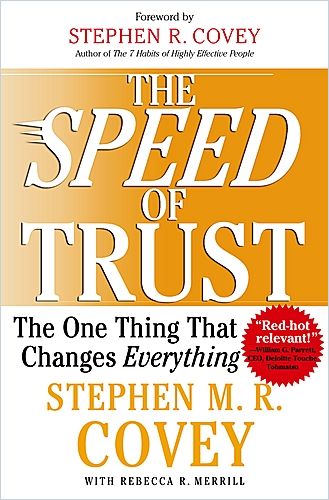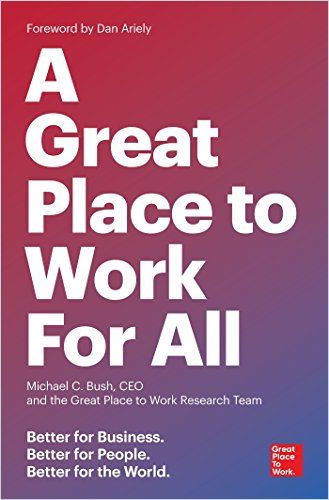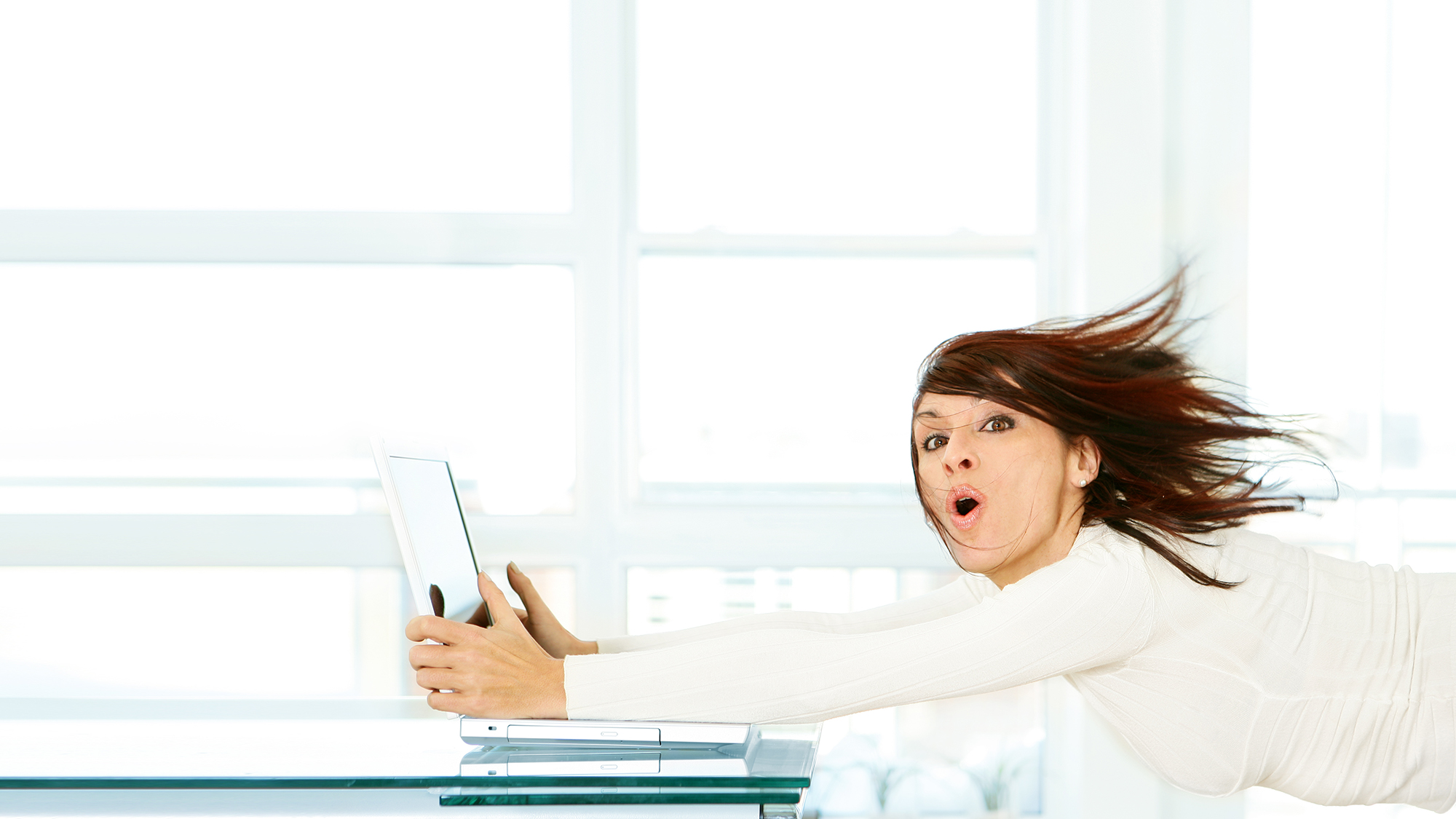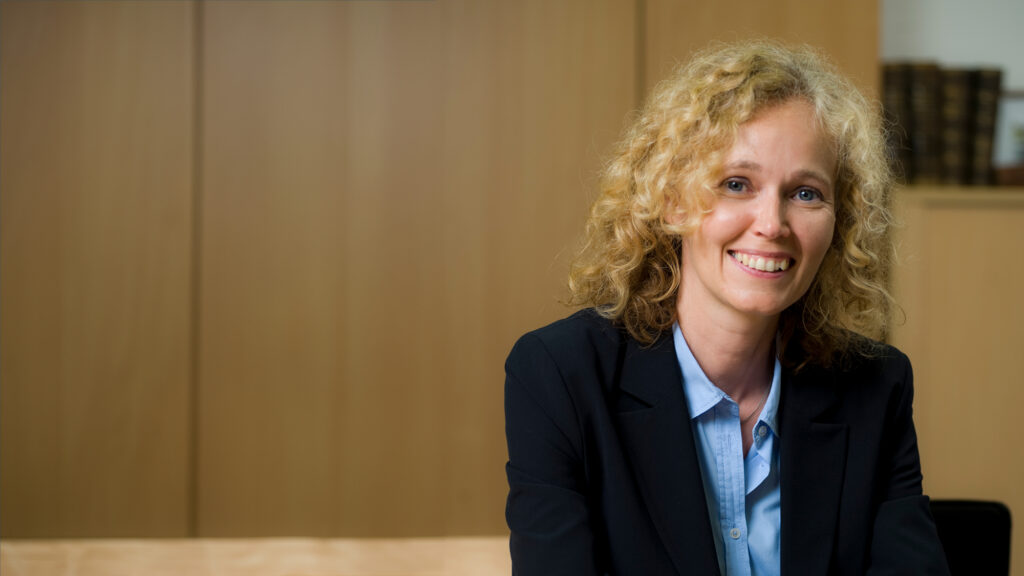Design Your New Normal
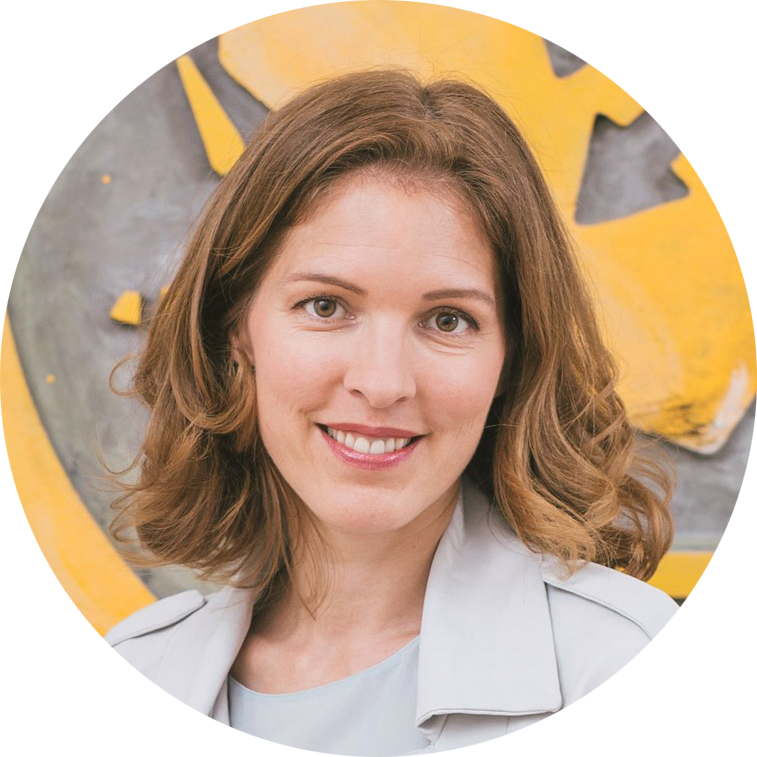
For some people “New Work” simply meant the physical transformation of work. The digitalization of a lot of processes made it possible to free the employee from his or her office desk, and time and space, formerly the cornerstones of organized office life, blurred out. Long before the current crisis, company headquarters were replaced by a skyrocketing number of fancy co-working spaces, frequented by an unprecedented crowd of digital nomads who are not self-employed creatives but still – somehow – “ordinary employees” of companies.
And then came COVID-19. And everything went digital or upside down. So, now that we haven’t touched a suit or heels in weeks, maybe months, and the old and soft jeans I wear now seem to be part of my body, let’s talk about a future that might feel similarly good and fitting.
Remote
In early March in a lot of countries around the globe, public social life was shut down. Beside the brave and precious frontline workers in hospitals, food shops, security and transportation, we all stayed home and worked from there. Millions of people discovered Zoom, Microsoft Teams and Google Meet (and still keep finding other new ways to interact). From one government press conference to another – from unrestrained to locked up – most offices became burning platforms.
We had to jump. All of us.
Changes that would have taken months before were made immediately. Universities and schools reinvented their traditional schooling models – some of them thousands of years old – in a couple of days. Most companies, even those who rejected the idea vigorously before, went remote. Going to an office became the exception overnight.
React
The result was a huge reorganization of our professional and social lives. Physical distancing was, from that moment on, the “New Normal.” Getting used to it takes some time, and challenges each of us. The task lists don’t get any smaller: There’s always something beeping somewhere, an update needed, a colleague who needs you – and you’re supposed to be there for your loved ones at the same time. How can we think with a long-term vision, when there are so many short-term challenges?
Disconcerted by the misanthropic environment COVID-19 has created, some of us regressed by indulging with loads of cookies – there is still a shortage of eggs in the store – or salted almonds, before gradually starting to relax, reorganize our family schedules, set up a home office and work again.
Reconnect
After a couple of days of choc and grief, we mastered the tools for remote work and defined the kids’ school schedule. Then it was time to reconcile our professional duties with the needs of our families. For some of us, as our physical world retracts, our close relationships deepen as we cannot take them for granted anymore, and realize that we crave meaningful connections. In our professional world, Slack, Zoom and Mural are our new best friends. As digital remote work is so different, we need to set new rules:
- Meetings must be more carefully planned, the goals have to be explicitly defined, and starting and ending on time is absolutely necessary.
- This also applies to scheduling additional 15-minute-buffers in our timetable rather than planning back-to-back meetings, in order to be fully present and avoid unproductive multitasking.
- Meetings must be shorter as it is more difficult to pay attention without the physical and stimulating presence of colleagues.
- Whenever possible, videoconferencing should win over audio as it is easier to glean what is happening in the field and react to it.
- Daily or weekly informal moments like having coffee or lunch together are crucial to release tensions and continue to operate as a unified team advancing toward a common goal.
- These very strange times are also an opportunity to remind ourselves what is really important for us, and that we must take time to relax.
Here you’ll find more hints and work hacks to consider:
Reset
We have heard it often: A crisis is also an opportunity for renewal. It isn’t a pleasant way to find out, but it is a spur to rewind, and remove what doesn’t serve you anymore or holds you back.
It is the best moment to refocus on what is important for us.
Take time to rekindle the little flame of your life’s purpose and realign your goals to it.
Recovery
After moments of grief and struggle (When will we be able to get together in bigger groups again?), and fear (What are the social, economic and health consequences?), and a lot of work, we pull together our resources to start the recovery process. We might not have the remedy yet, but we know that we have to reinvent our lives. Pausing allows the vision to reveal itself.
Recreate
When going from 100% office to 100% remote, we need to use the experience to design a better work-life balance. Wait, is it really work-life balance? Is there really your work one side and your life on the other? No.
The “New Normal” at a great organization will allow us to work from home if this is more suitable for us (and the tasks we are dealing with). That does not necessarily mean that we will not enter the headquarters any more. We will continue going to the office to meet and collaborate with our colleagues, but only if that proves useful or necessary.
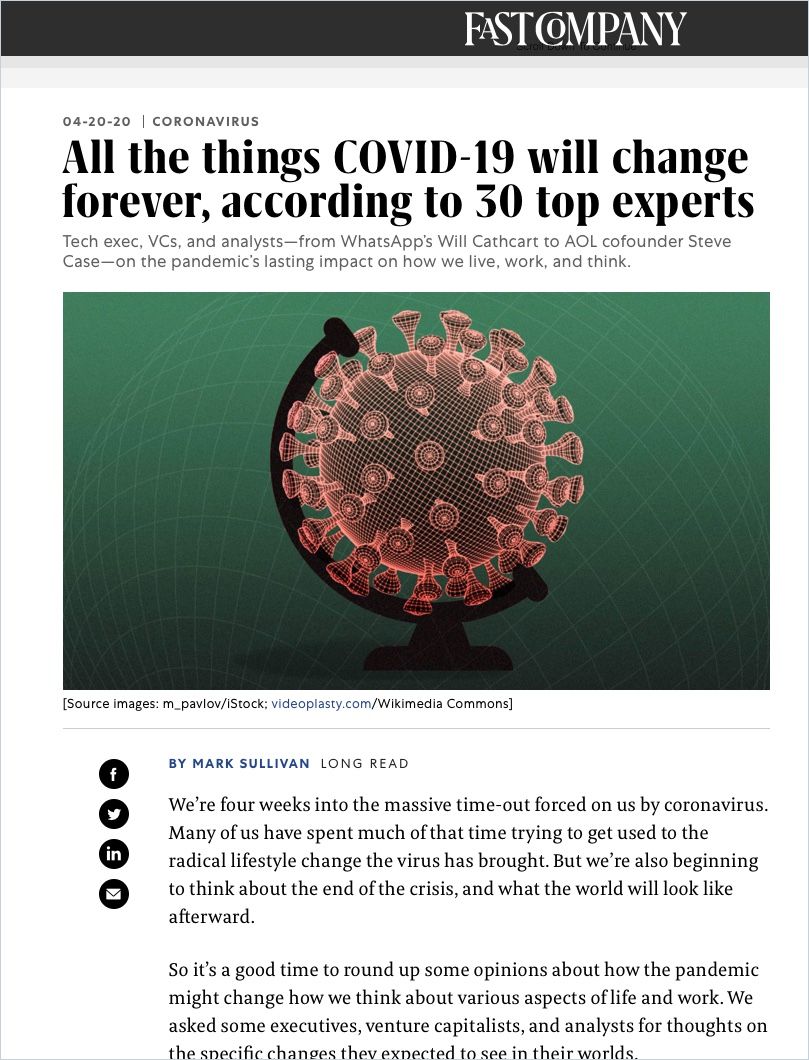
All the Things Covid-19 Will Change Forever According to 30 Top Experts
Fast Company Read SummaryWe hopefully won’t return “just to be there,” in our bubble, in front of a computer and within reach of the supervisor who operates the time clock. Chances are good that this person will in fact be the only one from the “old normal” we might never see again – think about that.
Reducing the time spent commuting, being able to continue to do gymnastics with our sons and daughters in the morning, maybe taking more time for reading and self-educating, cooking more often and enjoying basic meals – does any of this sound bad to you? Wouldn’t it be good to decide actively not to return to our crazy, alienating “old normal” lives?
This can be an even bigger change than the one we just passed through.
We are now in a position to play a brand new game, and the rules of this game will be written within the next couple of weeks. Everyone should take part in that process and make his or her position clear. So, ask yourself: What gave you the biggest feeling of relief when you were liberated from it? What did you – and your organization – get out of this time period?
Pin it down, schedule a meeting with your colleagues and start designing that “New Normal.” Now!


